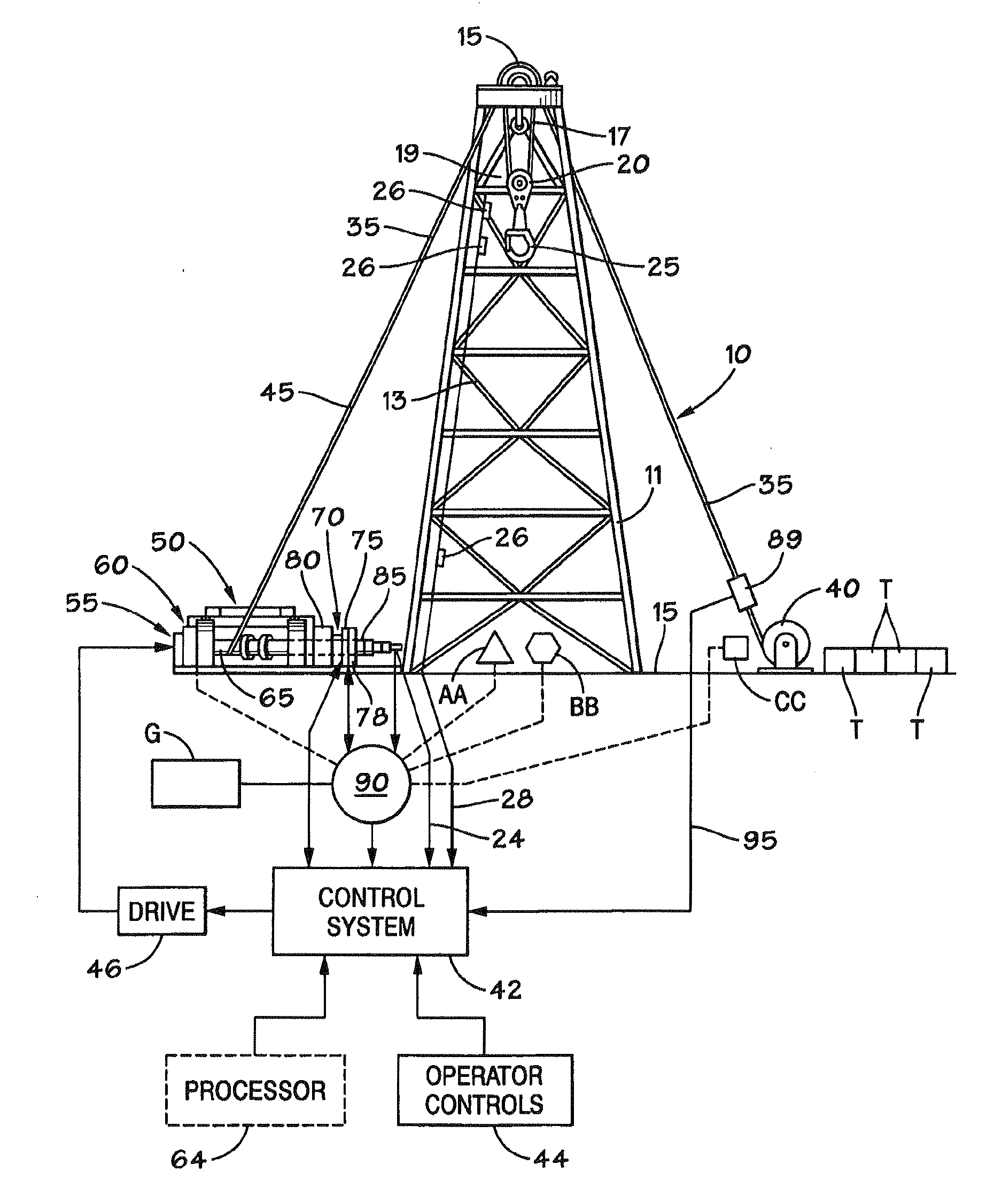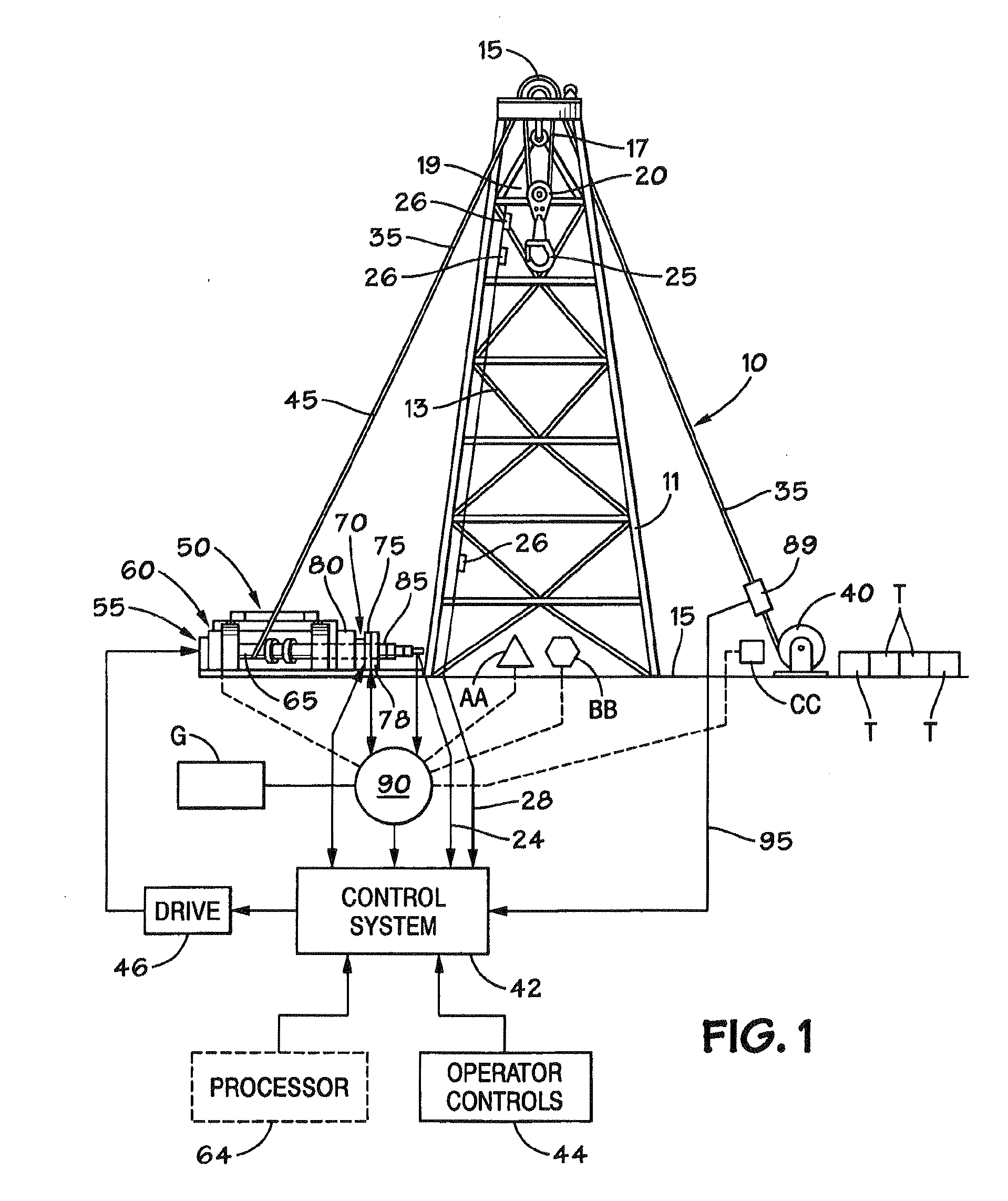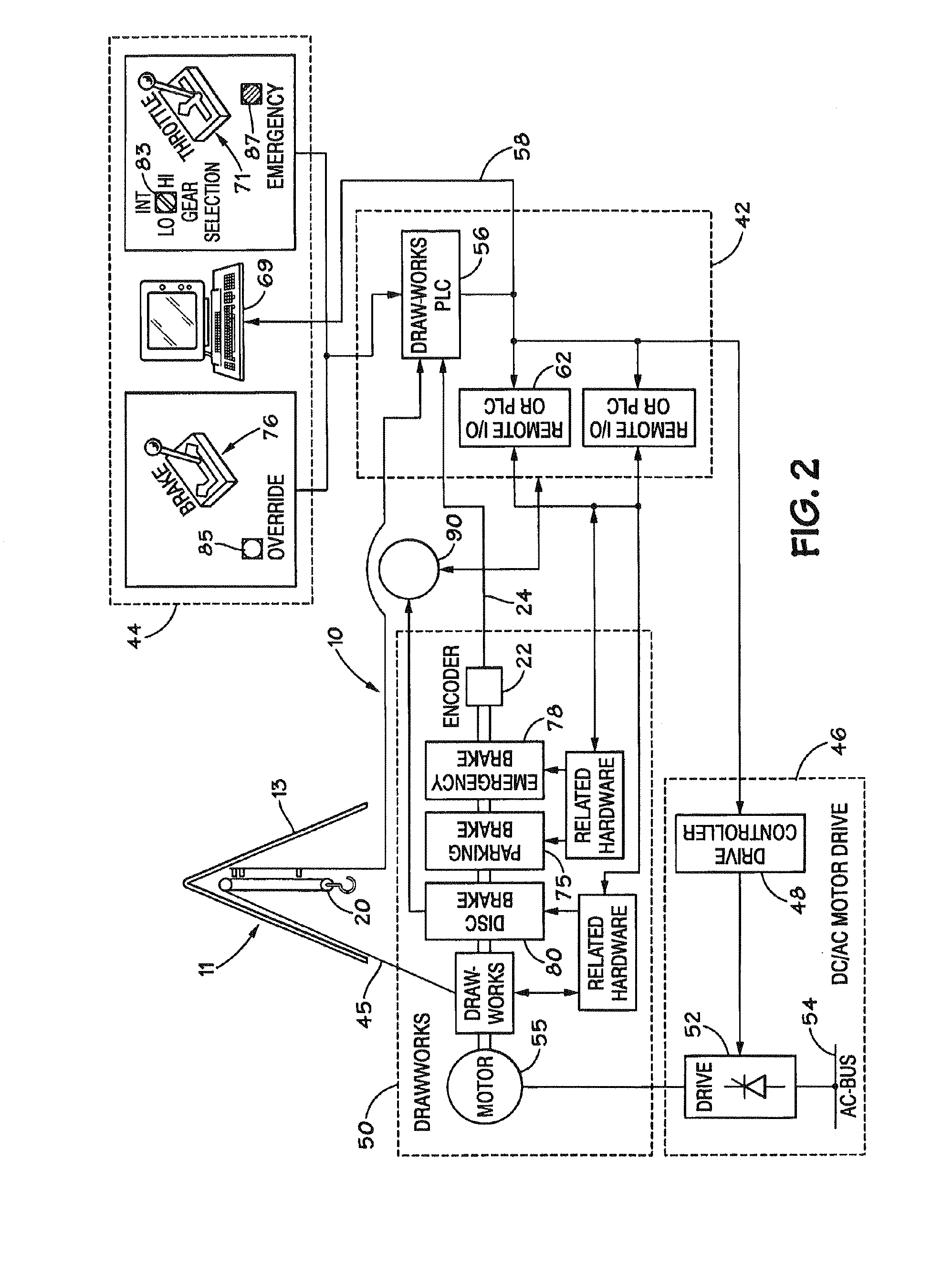Welbore Rig Generator Engine Power Control
a generator engine and rig technology, applied in the direction of dc source parallel operation, ac network with different sources at the same frequency, single network parallel feeding arrangement, etc., can solve the problems of negative impact on operation, difficult and/or expensive maintenance of such engines at a constant heavy load, excessive carbon dioxide emissions, etc., to improve or optimize engine loading, improve or optimize engine response, and improve engine operation efficiency
- Summary
- Abstract
- Description
- Claims
- Application Information
AI Technical Summary
Benefits of technology
Problems solved by technology
Method used
Image
Examples
Embodiment Construction
[0063]Referring to FIGS. 1 and 2, diagrams of a drawworks control system according to the present invention connected to a drilling rig and including a traveling block is illustrated. A system 10 according to the present invention has a derrick 11 that supports, at its upper end, a crown block 15. Suspended by a rope arrangement 17 from the crown block 15 is a traveling block 20, or load bearing part, for supporting a hook structure 25.
[0064]A hoisting line 30 is securely fixed at one end to ground by means of a dead line 35 and a dead line anchor 40. The other end of the hoisting line 30 forms a fast line 45 attached to drawworks 50. The drawworks 50 includes one or more electrical motors 55 and a transmission 60 connected to a cylindrical rotatable drum 65 for wrapping and unwrapping the fast line 45 as required for operation of the associated crown block 15 and traveling block 20. The rotatable drum 65 is also referred to as a winding drum or a hoisting drum. A brake arrangement ...
PUM
 Login to View More
Login to View More Abstract
Description
Claims
Application Information
 Login to View More
Login to View More - R&D
- Intellectual Property
- Life Sciences
- Materials
- Tech Scout
- Unparalleled Data Quality
- Higher Quality Content
- 60% Fewer Hallucinations
Browse by: Latest US Patents, China's latest patents, Technical Efficacy Thesaurus, Application Domain, Technology Topic, Popular Technical Reports.
© 2025 PatSnap. All rights reserved.Legal|Privacy policy|Modern Slavery Act Transparency Statement|Sitemap|About US| Contact US: help@patsnap.com



